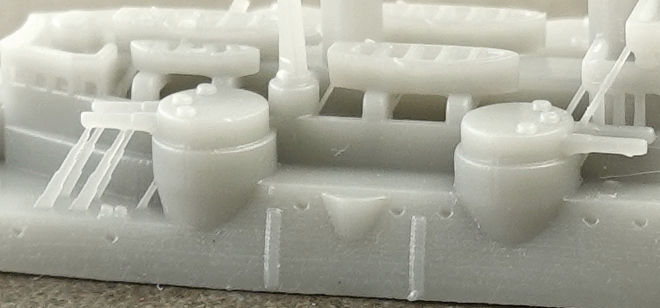Cleaning
DLP Models
The
DLP models you receive have been cleaned in alcohol and should be ready to trim
and primer. If you notice any small residue spots on the surface, you can do a
quick IPA (isopropyl alcohol) rinse. Do not soak the models in alcohol, the
plastic will absorb it causing warpage. If that happens by accident, let the
model fully dry and it should return to normal.
Trimming
Models
DLP models will need to have their many tiny support sprues
manually removed before priming and painting. The best way to remove them is
with a very fresh, sharp razor blade and a fresh #11 x-acto knife. First use
the razor blade corner to slice the top (or bottom) of each support - for gun
barrels I usually use the very corner of the fresh razor blade to first gently
slice through the support where is joins the barrel. Once you have cut most or
all of the way through one end of the support, you can use the x-acto knife to
leverage away the rest of the support. Careful use of the razor corner is the
best way to remove the supports without snapping off fragile features (if
any).
|

